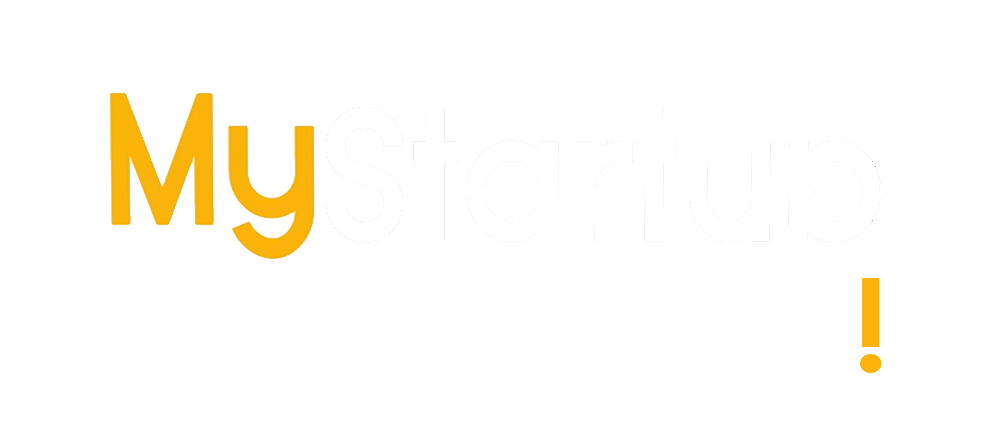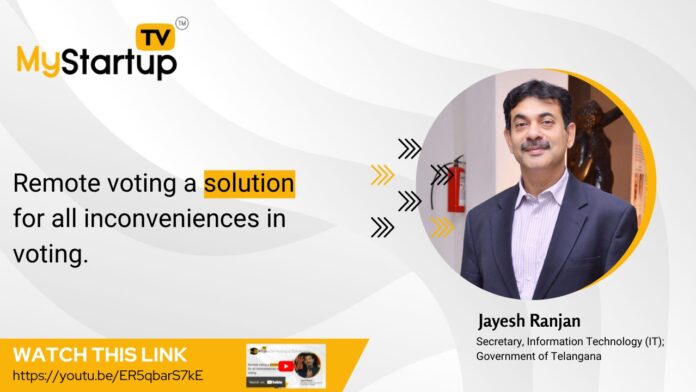In a fireside chat at T-Hub, the Principal Secretary of the Industries & Commerce (I&C) and Information Technology (IT) Departments of the Telangana government described the journey of Blockchain initiatives in Telangana.
The genesis of supporting emerging technologies like Blockchain came again from the same origin. The message that we got that we should embrace technology, we should embrace startups who bring those technologies. Again, as a government, this is something very novel and very unique. We created a wing in our It department whose job was to exclusively focus on emerging technologies. And all this is way back in 2014 rather. So we created a team and Ramadai guru who heads that emerging technology wing. So this is a wing which identifies which are the technologies which have greater potential to actually solve or provide solutions to some of the pain points of the common person and who are using those technologies, what are the use cases elsewhere in the world? So in 2014 itself, we had identified eight such emerging technologies. Of course, AI is something which is very prominent today. In 2014 also, it was beginning to show its progress. But Blockchain was the other one which we had identified. And in those days, again in 2014, the clarity that we have on Blockchain today was not that clear. In fact, as all of us would know, the understanding of blockchain was very much related to crypto, that you can have an alternate way of dealing with your financial transactions, which is digital, which is easy to operate.
But immediately thereafter, once we decided that we’ll get into blockchain, lots of controversy started, like trading in crypto, the valuations and some people losing their money when the valuations go down. And things like that became very speculative. Then reserve banks started commenting on it, dissuading governments from getting into this kind of activity. And for some reason they’re still maintaining that stand that we should be very worried about crypto. So I’m not taking any stand on that. This is what the Reserve Bank stand was. But then when we started understanding the way blockchain and crypto are getting linked together, we felt that we can disaggregate it, let the crypto path be followed as per national regulations, because states don’t have any flexibility in deciding that they will support crypto or they will ban crypto, et cetera. But on the technology part, states have complete autonomy to adopt it in whichever way we would like to do. So what we do is that for every piece of technology that we are interested in working on, we do three things. One is that we announce a policy or a framework which makes it very known and very public and very explicit.
What responsibilities will the government take? So what is going to be our role and what role do we expect from other stakeholders? For example, what role will be played by the private companies? What roles will be played by the academy institutions? What role will be played by, let’s say, some collaborator from the government of India or some international institution? And what role will be played by the startup? So that document is there. So our blockchain framework or the blockchain policy, as you call again, is something and we prepare all these documents through lots of bottom subconscious research. It’s not an ambitious, top-driven kind of document. We understand very well, see thoroughly what the community is expecting, stakeholders are expecting and then provide that in the policy. The second very important thing is you can see it everywhere. You can see it in the T hub. You can see it in other institutions like T works, P hub, Task, Rich, etc. For that we create an institution which takes responsibility for it. So the institution which has been created to implement our blockchain programs is called blockchain district. So it’s a governance arrangement, it’s an institutional arrangement. So the founding partners when we launched our blockchain programs were a couple of private organisations, a couple of academic institutions, and a couple of government of India institutions. So all of them have got together to create what is called a blockchain district with a proper governance structure. There is a person who is the coordinator. There are people who represent these institutions in that blockchain district.
Governance happens through that district. And the third very important thing which I already alluded to is the fact that to run all these institutions, we bring talent, the best talent that is available. So we are never right from day one, we have never been under any illusion that the government itself is full of talent. In fact, we are very clear in our minds that far superior talent is outside the government rather than inside the government. And you will not believe it, but at least in my two portfolios, I look after the It and the industry’s portfolios in the government. In these two portfolios that I handle, close to 350 people have been recruited from the open market who work for us. And these are the people who have been recruited based on their ability, their talent. So when I told you that two of my colleagues are here, they’re also not regular government employees. They are people whom we have recruited. They’re one of the 350 people.
So this again is a very reformative kind of a thought process that you recognize that the government has limitations. Government should stay away from micromanagement. The government should yield space to better talent which is available outside. So this is the genesis of how we have started doing blockchain programs. And when you see the blockchain policy, or for that matter, any other policy that we bring out, one of the commitments that we put right up front is that the government will lead by example. So the Ugliest adoption of blockchain cases will happen in the government itself.
And again, I feel very proud to share with you that since 2016, when the policy first came out, and today, or 2017, rather 2017 and today, that is 2022, five years, we would have tried out at least two dozen plus use cases in the government. And some of them are very significant. One of the latest initiatives of ours, we have not publicised it extensively, but we are writing papers on it, and we’ll publish it in academic journals and also in the public kind of media about remote voting. Many of us lament that when elections happen, the voting percentage is so low, voter turnout is low. We talk about voter apathy, that people are not connected with democracy, and all kinds of noises are made and all but whatever could be the reason. One of the basic fundamental reasons is the sheer inconvenience of the voting process. You don’t know where your name is, you struggle to find out the polling station, you go there.
There’s no kind of organised system. You stand in long queues and sometimes at the end of it you’re not even allowed to vote. So all kinds of complications happen on the voting day, election day. So we have been able to showcase for the first time in a life, kind of a scenario in a town called Kamam in Telangana, a reasonably sized town, a municipal town, that is, how can one do remote voting by sitting at your home. So we have been able to showcase how the voter is identified. Typically, when a regular vote happens, in person voting, that is, lots of contentious issues are raised. For example, impersonation is a big thing, like you are not you, you are voting for someone else. Then your voter, I card, your photograph, all these things are matched. There are some agents who are available, polling agents. They challenge you if they feel that you are someone else.




